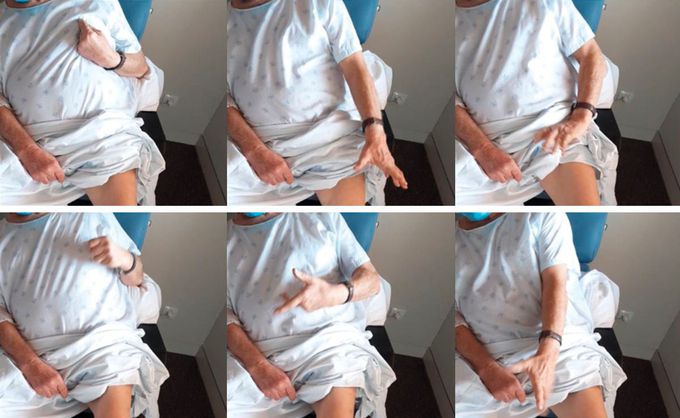


Nonketotic Hyperglycemic Hemichorea and Hemiballism in a Patient with Nonketotic Hyperglycemic Hemichorea
A 78-year-old man with type 2 diabetes presented to the emergency department with a 1-week history of involuntary movements of his left arm and leg. On physical examination, large-amplitude flinging movements of the left arm and leg that were consistent with hemiballism were observed (see video). The serum glucose level was 159 mg per deciliter (9 mmol per liter; reference range, 70 to 100 mg per deciliter [4 to 6 mmol per liter]), and the glycated hemoglobin level was 17% (reference value, <6%); no ketones were present. Computed tomography of the head revealed an area of increased density in the right basal ganglia. Although magnetic resonance imaging of the head did not show evidence of an acute stroke, the study could not be completed in its entirety owing to the patient’s involuntary movements. An evaluation for infectious, autoimmune, and drug-induced causes was negative. After 48 hours of treatment with neuroleptic medication and maintenance of glycemic control, the patient’s involuntary movements ceased. The patient received a diagnosis of nonketotic hyperglycemic hemichorea, an acquired type of hemichorea–hemiballismus that is characterized by involuntary movements and by abnormalities in the basal ganglia on imaging in the context of hyperglycemia, both of which resolve with glycemic control. The patient was discharged from the hospital with a prescription for an intensified diabetic treatment regimen and a referral to an endocrinologist. The hemiballism did not recur.
https://youtube.com/shorts/mAG8e9FQiwM?si=BjS2iRaTT_GEbkkj

